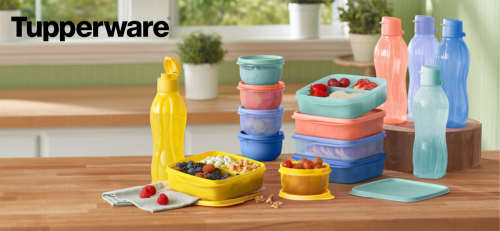“You’ll get old someday…if you live long enough.”
Those were the words my mother repeated often when I was growing up. Well, I have lived long enough, and I guess I can say I’m getting old. But along with that “getting old” has been the opportunity to have witnessed many things, some bizarre.
Like the Tupperware parties that Mom would sometimes host in our house. I’m pretty sure it was the lure of a nice gift that was promised by her friend the Tupperware lady, whose job it was to make sure there were plenty of parties going on to sell their extensive line of plastic containers. And the Tupperware lady earned her income, if you will, just like everyone else involved in multilevel marketing gimmicks.
Dad, my brother, and I wisely left the house. This was no place for the males of the species to be hanging out. And given that it was the 60s, the women were all dressed up as if they were going to church. On a weeknight. As a result of the thousands of Tupperware parties hosted across not just the US, but also around the world, I venture to say there was not a kitchen anywhere that didn’t have at least a few of those rugged containers hiding in cabinets. Their signature “burping” method sent the signal that food would be safe in these air-tight containers.
Introducing Mr. Tupper
It was a great idea for the time. Invented in 1938, and finally trotted out to market in 1946, Earl Tupper promised to both solve all of our food storage problems, as well as provide income opportunity for women. Some might say it was exploitation, but women bought it nonetheless. For many decades, the brand was only available through those individuals who were recognized as distributors.
It truly was genius, because group psychology takes over once the party starts. Every woman invited to the party felt the implicit pressure to buy at least one item. Some bought into the model hook, line, and sinker, and became distributors in their own right. The distributor earned a commission on every item sold, and Mom got a free bowl. Oh boy.

A funny thing happened, though, and Mr. Tupper’s invention started losing its relevance over time. Women entered the workforce, and the business model of Tupperware parties faded fast. The company tried selling through Target a couple of decades ago, but that flopped. They had also tried their hand at e-commerce in 1999, but this too fell flat.
Shedding Value Fast
Today, the company is teetering on closing, its stock having shed 90% of its value in the last year, and 50% in one day a couple of weeks ago. The company had forged a new relationship with Target, but, simply put, sales are no longer what they once were. Not even close.
The problems are multiple. The brand is dogged by its dowdy image. For younger women today, this is the stuff your grandmother used. And never mind that the notion of housewives is antiquated. Then there’s all the competitors. When Mr. Tupper was busy building his business, there was little competition. Today, though, there are scores of other plastic storage containers available, and often at far lower prices.
Failure To Embrace The Future
But just like the Girl Scouts whom were slow to embrace the modern era and start selling cookies online, Tupperware clung to their old business model long after it was practically dead. Who has the time or desire to host a household party to sell containers? At its worst, the model was mansplaining to women how they too could make money. But women have risen above that, and do not need to be humored.
I suspect that, barring a miracle cash infusion, we will be reading of Tupperware’s demise very soon. It was a nice run, but when your strategic thinking remains mired in methods that are generations removed from reality, one can only expect the worst. And just like my mother would have said, they lived long enough to get old.
It’s just that they failed to learn much of anything along the way.
Dr “This May Be Their Last Burp“ Gerlich


